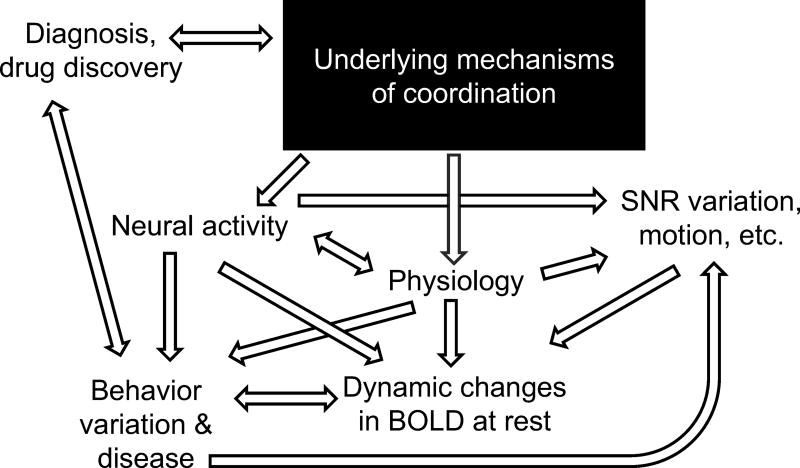Figure 2.
Attempting to find the neural basis of dynamic rsfMRI. We measure dynamic changes in BOLD at rest and compare it to behavior variation and disease. These changes are influenced by neural activity and physiology, but are also influenced by factors which may not be of interest to the experiment (e.g. subject motion) or may not be even come from a biological source (e.g. SNR differences due to the radiofrequency coil used). In turn, the behavior variation and disease observed may be linked to these changes (e.g. certain groups may move more than other groups). If we want to use dynamic rsfMRI for disease diagnosis, or to understand the neurometabolic changes in disease so that we can develop drugs to treat them, we need to understand the underlying mechanisms which create the coordination.

